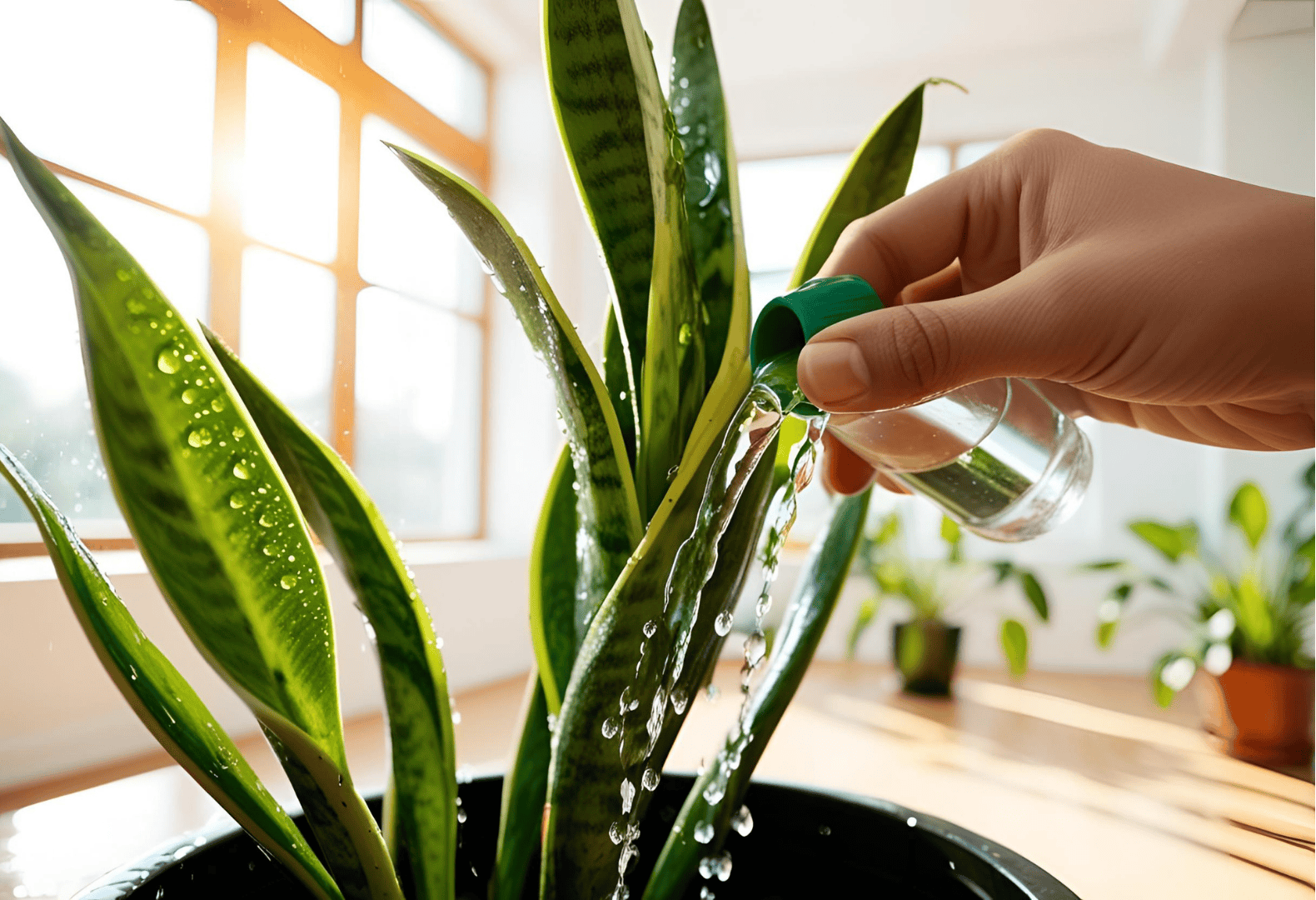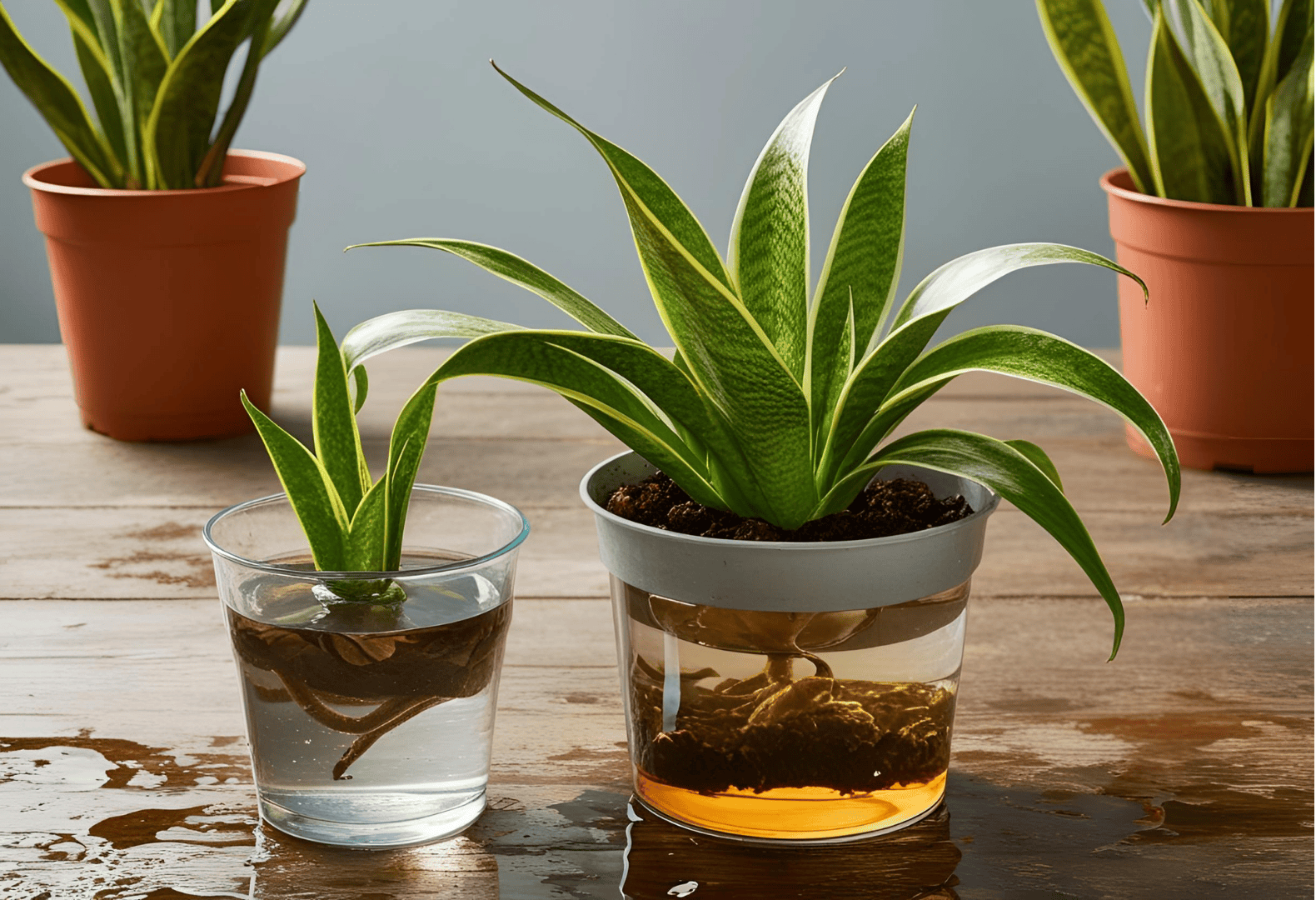Snake plants, also known as Sansevieria, are one of the most popular and low-maintenance houseplants. These tough, resilient plants can thrive even in less-than-ideal conditions, making them perfect for beginners and busy plant parents. In this comprehensive Snake Plant Care Guide, we will walk you through all the essentials you need to know to keep your snake plant happy and healthy. Whether you’re a seasoned plant enthusiast or just starting your journey into indoor gardening, this guide is your go-to source for snake plant care.

Watering Your Snake Plant
Snake plants are known for their drought tolerance, which means they don’t require frequent watering. Overwatering is one of the most common mistakes people make when caring for snake plants, and it can lead to root rot. To properly water your snake plant, always check the soil first. If the upper inch of soil is dry to the touch, you should water. If the soil isn’t dry yet, postpone watering for several more days.
During the growing season (spring and summer), you might need to water a bit more often, but in fall and winter, reduce watering to avoid waterlogging the roots. A general rule of thumb is to water once every 2-3 weeks, but this can vary depending on your home’s temperature and humidity levels.

Sunlight Requirements for Snake Plants
One of the great things about snake plants is their ability to adapt to a variety of lighting conditions. Although they do best in bright, indirect light, they can also survive in low-light conditions. In fact, snake plants can survive in places with little to no natural sunlight, making them perfect for offices or rooms with limited windows.
That being said, placing your snake plant in a spot with indirect sunlight will help it grow faster and more vigorously. Too much direct sunlight can burn the leaves, so avoid placing your plant in a location where it will be exposed to harsh, direct rays for long periods of time.
Fertilizing Your Snake Plant
Fertilizing your snake plant isn’t necessary often, but it can help encourage healthy growth. Apply a balanced, water-soluble fertilizer diluted to half strength once monthly throughout the growing season. Be sure to stop fertilizing in the fall and winter when the plant is dormant. Over-fertilizing can cause the tips of the leaves to turn brown or yellow, so always follow the recommended dosage.
Temperature & Humidity
Snake plants thrive best in warm conditions, preferring temperatures between 60°F and 85°F (16°C to 29°C). While they can handle some temperature swings, it’s best to keep them away from cold drafts and direct heat sources, as sudden temperature changes may stress the plant.
Regarding humidity, snake plants are quite adaptable. They tolerate dry indoor air well, which makes them suitable for homes with low humidity. However, like most plants, they benefit from moderate humidity levels, so if your environment is very dry, using a humidity tray can help improve their growing conditions.
- All Products
Plant Care Humidifier – Ultrasonic, Mute, Intelligent with Remote Control and Aromatherapy
£138.40 Select options This product has multiple variants. The options may be chosen on the product page - All Products
Flame Effect Aromatherapy Humidifier – Ultrasonic Plant Care Device (250 ml)
£29.99 Select options This product has multiple variants. The options may be chosen on the product page - All Products
Ultrasonic Aroma Diffuser with Colorful Night Light – Silent Essential Oil Diffuser with Remote Control
Price range: £76.50 through £83.61 Select options This product has multiple variants. The options may be chosen on the product page - All Products
Portable Humidifier for Plants – Keep Your Greenery Healthy Anywhere
£28.87 Select options This product has multiple variants. The options may be chosen on the product page
Soil Requirements for Snake Plants
Well-draining soil is essential for snake plant care. A cactus or succulent mix works well because it allows excess water to drain away from the roots. You can also make your own mix by combining regular potting soil with perlite or sand to increase drainage.
Pruning Your Snake Plant
Snake plants need minimal pruning, but it’s beneficial to occasionally remove any damaged or dead leaves. Use clean, sharp scissors to cut the leaves close to the soil at their base. Additionally, trimming overly tall or leggy leaves can help promote a fuller, more compact growth habit.
- All Products
Pruning Shears for Gardening – Heavy-Duty Manganese Steel Branch Cutter with Safety Lock
£22.99 Select options This product has multiple variants. The options may be chosen on the product page - All Products
Pruning Shears – Branch Cutting Tools for Gardening, Household & Fruit Tree Maintenance
Price range: £31.99 through £35.99 Select options This product has multiple variants. The options may be chosen on the product page - All Products
Stainless Steel Pruning Shears – Multifunctional Elbow Design for Efficient Branch Cutting
Price range: £19.99 through £29.99 Select options This product has multiple variants. The options may be chosen on the product page
Common Pests and Diseases
Snake plants tend to fend off pests well, but on rare occasions, mealybugs or spider mites can appear. If you spot pests, use a cotton swab dipped in rubbing alcohol to remove them, or treat the plant with insecticidal soap or neem oil. Be sure to wipe down the leaves regularly to keep the plant clean and healthy.
Is the Snake Plant Toxic?
While snake plants are safe to have around, they are mildly toxic if ingested. This is primarily a concern with pets and young children who may try to chew on the leaves. If you suspect your pet has eaten any part of the snake plant, contact your veterinarian immediately. The toxins in the plant can cause nausea or vomiting but are generally not life-threatening.
Propagation
If you’d like to propagate your snake plant and create more plants, it’s fairly simple. Take a healthy leaf, cut it into sections, and place the cuttings in water or soil. If you’re propagating in water, change the water every few days until roots form, which usually happens in about 3-4 weeks. When the roots have grown a few inches, you can transfer the plant into soil.

Snake Plant Care Tips for Thriving Growth
- Avoid Overwatering: Snake plants are drought-tolerant, so it’s better to underwater than overwater. Always check the soil before watering.
- Offer Indirect Light: Although snake plants can survive in low light conditions, they thrive best when placed in bright, indirect light. Avoid direct sunlight to protect the leaves from sunburn.
- Repot Every 1-2 Years: Snake plants don’t need frequent repotting, but once every couple of years, it’s a good idea to refresh the soil and give the roots more space.
- Clean the Leaves Regularly: Dust can build up on the leaves, blocking sunlight. Gently clean the leaves using a damp cloth to keep them free of dust.
- Be Patient: Snake plants are slow growers, so don’t expect rapid growth. With proper care, they’ll thrive for years.
Frequently Asked Questions (FAQ)
How often should I water my snake plant?
Snake plants prefer to dry out between waterings. Water them every 2-3 weeks during the growing season, and less frequently in winter.
Can snake plants grow in low light?
Yes! Snake plants can thrive in low light, but they will grow faster and healthier with bright, indirect sunlight.
Is the snake plant toxic to pets?
Yes, snake plants are mildly toxic if ingested. Place them where pets and small children can’t reach.
Can I propagate my snake plant in water?
Absolutely! Cut a leaf into sections, place it in water, and wait for roots to form. After the roots develop, move the plants into soil.
Conclusion
Snake plants are one of the easiest houseplants to care for, making them perfect for beginner plant owners or those with little time to dedicate to plant care. With the right balance of sunlight, water, and occasional fertilizer, your snake plant will thrive and add a touch of greenery to your home for years to come. Remember to check for pests, avoid overwatering, and keep the plant in a warm, well-lit spot, and you’ll have a healthy, happy snake plant by your side.

Read More:
- What Is Snake Plant? A Low-Maintenance Marvel for Your Home – Discover why Snake Plant is a favorite choice for easy indoor greenery.
- How to Grow Snake Plant at Home: Guide to a Healthy Indoor Plant – Step-by-step guide for growing a thriving Snake Plant at home.
Plant Profile

Common Name

Plant Type

Mature Size

Sun Exposure

Soil Type

Soil pH

Bloom Time

Color

Hardiness Zones

Native Area

Humidity

Lighting

Temperature

Difficulty

Hibernation

Toxicity















